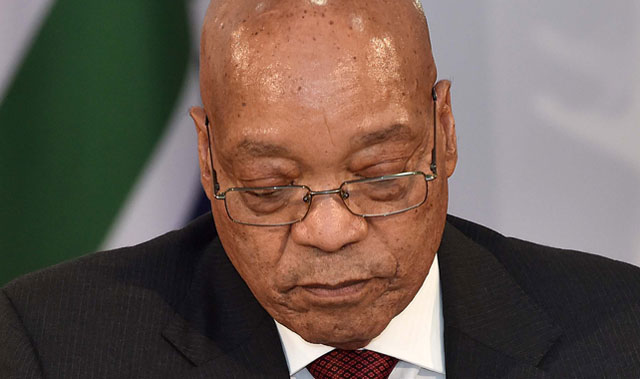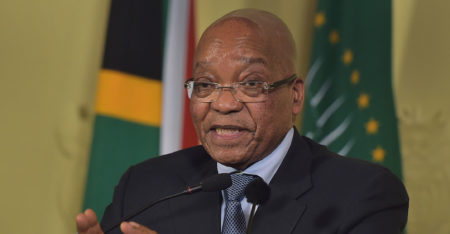
South Africa lost its investment-grade credit rating from S&P Global Ratings for the first time in 17 years in response to a cabinet purge by President Jacob Zuma that investors worry will thwart an economic recovery.
S&P knocked the foreign-currency rating to BB+, the highest junk score, on Monday and warned that a deterioration of the nation’s fiscal and macroeconomic performance could lead to further reductions. The local-currency rating was reduced to BBB- from BBB. The outlook on the both ratings was kept at negative, signalling that the next move could be downward.
Zuma sacked finance minister Pravin Gordhan, who pushed for budget restraint, in a stunning cabinet reshuffle last week that could split the ruling ANC. Investors regard the firing as a blow to an economy growing at the slowest pace since the 2009 recession and grappling with 27% unemployment.
“The downgrade reflects our view that the divisions in the ANC-led government that have led to changes in the executive leadership, including the finance minister, have put policy continuity at risk,” S&P said. “This has increased the likelihood that economic growth and fiscal outcomes could suffer.”
After Zuma’s midnight cabinet purge, the rand suffered its worst weekly slide since December 2015, while dollar debt due in October 2028 fell the most since November.
The rand extended losses and weakened 1,4% to R13,59/US$ by 5.45pm in Johannesburg on Monday. The yield on rand-denominated government bonds due December 2026 rose 12 basis points to 9%.
Investors already demand a bigger premium over Treasuries to hold South African dollar-denominated debt than Russia or Brazil, both junk credits.
“Zuma has been playing Russian Roulette with our investment-grade rating through his actions,” Colin Coleman, the head of sub-Saharan Africa at Goldman Sachs Group, said in an interview on Bloomberg TV last week after the cabinet reshuffle.
Gordhan, who was replaced by former home affairs minister Malusi Gigaba, was removed after a months-long battle with Zuma over government spending. He’d been trying to ward off a downgrade with plans to narrow the budget shortfall to 2,6% of GDP by the fiscal year ending in March 2020, from the current 3,4%.
“The rating action also reflects our view that contingent liabilities to the state, particularly in the energy sector, are on the rise,” S&P said. “Higher risks of budgetary slippage will also put upward pressure on South Africa’s cost of capital, further dampening already modest growth.”
Pressure has been growing on Zuma to step down after he recalled Gordhan from a trade trip in London on 27 March where he was holding meetings with investors and ratings companies. Gigaba, who has no financial or business experience, is the nation’s fourth finance minister in 15 months.
“A downgrade wouldn’t be permanent,” Gigaba told reporters Monday in the capital, Pretoria, before the ratings announcement.
South Africa, the continent’s most-industrialised country, has enjoyed investment-grade standing at Moody’s since 1994, when the ANC came to power under Nelson Mandela. The other two ratings companies upgraded it above junk in 2000. — (c) 2017 Bloomberg LP




